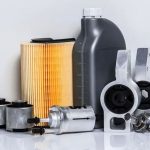Notice: Undefined index: sith_hide_share in /www/sites/alloy.wiki/index/wp-content/themes/likegoogle/single.php on line 32
Deprecated: get_settings is deprecated since version 2.1.0! Use get_option() instead. in /www/sites/alloy.wiki/index/wp-includes/functions.php on line 4862
Curtain wall systems are a non-structural cladding systems for the external walls of buildings. They are generally associated with large, multi-storey buildings.
Curtain walls separate the interior from the exterior, but only support their own weight and the loads imposed on them (such as wind loads, seismic loads and so on) which they transfer back to the primary structure of the building. This is in contrast to many forms of traditional construction in which the external walls are a fundamental part of the primary structure of the building.
Typically curtain wall systems divider frameworks contain a lightweight aluminum outline onto which coated or murky infill boards can be altered. These infill boards are regularly depicted as “coating” regardless of whether they are made of glass.

Drapery divider frameworks rose in the nineteenth century with the improvement of vast glass boards and turned out to be more regular from the 1930’s when aluminum was made accessible as a development material interestingly. They are currently nearly connected with the innovator development and specifically, the global style, which got to be well known amidst the twentieth century. This was an adornment free, stark type of innovation, portrayed by the redundancy of units and the broad utilization of glass. It is a style that is still in far reaching use for tall structures in urban areas around the globe.
Curtain wall systems can be custom designed and manufactured, but are often manufacturer’s proprietary systems that can be bought ‘off the shelf’. Custom-designed systems are generally only cost effective for larger buildings.
Curtain walls can adopt a ‘stick’ system, or can be unitised:
Stick frameworks are introduced piece by piece nearby, with the coating embedded into the casing from within or the outside relying upon access conditions.
Unitised frameworks are pre-manufactured in modules off-site and conveyed in boards. Unitised frameworks are better ready to misuse the advantages of industrial facility condition assembling and quality control and require lower establishment time nearby.
There are a wide range of possible infill panels for curtain wall systems, including:
Vision glass (which may be double or triple glazed, may include low-e coatings, reflective coatings and so on).
Spandrel (non-vision) glass.
Aluminium or other metals.
Stone veneer.
Fibre-reinforced plastic (FRP).
Louvres or vents.
Panels are often composites, with the facing materials bonded to, or ‘sandwiching’ insulation.
Frame and panel designs are very complex, as they need to perform multiple functions:
Transferring loads back to the primary structure of the building.
Providing thermal insulation and avoiding cold bridging and condensation.
Providing fire, smoke and acoustic separation. This is particularly difficult at joints between the curtain wall system and interior walls and floors.
Creating a barrier to water penetration.
Accommodating differential movement and deflection.
Preventing panels from falling out of the frame.
Allowing for opening windows.
Preventing the accumulation of dirt.
On tall buildings, access systems must be provided to allow regular inspection, maintenance, cleaning and replacement (in particular, replacement of external seals).
Systems used to prevent the passage of water through joints (driven by pressure differences between the inside and outside) include; face-sealed, water-
managed and pressure-equalised (PE or ‘rainscreen’) systems.
Pressure-equalised systems create a rebate between the internal and external gasket that is ventilated to the outside so that there is no pressure difference between the outside and the rebate. As a result, water is not driven into the rebate by a pressure difference that would otherwise build up across the outer gasket. Any rain that penetrates the outer seal can be drained to the outside through the vents, or weep holes. This is considered to be more reliable than face-sealed systems that attempt to create a ‘perfect’ seal which inevitably fails due to pressure-driven moisture.
Water-managed systems are similar to pressure-equalised systems, but there is no attempt to prevent water penetrating the outer seal, and so the primary function of weep holes or drains is to drain water rather than to allow pressure equalisation.
Shanghai Metal Corporation is a trusted aluminum alloy, aluminum foil price, stainless steel price and stainless steel manufacturer, kinds of stainless steel in china.
Guest contributors are welcome at the Alloy Wiki.It is a weekly wiki and guide on alloy information and processing technology, while also about the vast array of opportunities that are present in manufacturing. Our team of writers consists of a Machining Material Supplier / Machinist / Tool and Die Maker, a Biomedical Engineer / Product Development Engineer, a Job Development Coordinator / Adjunct Professor, and a President and CEO of a manufacturing facility.
Link to this article:An unique curtains walls
Reprint Statement: If there are no special instructions, all articles on this site are original. Please indicate the source for reprinting:Alloy Wiki,thanks!^^


